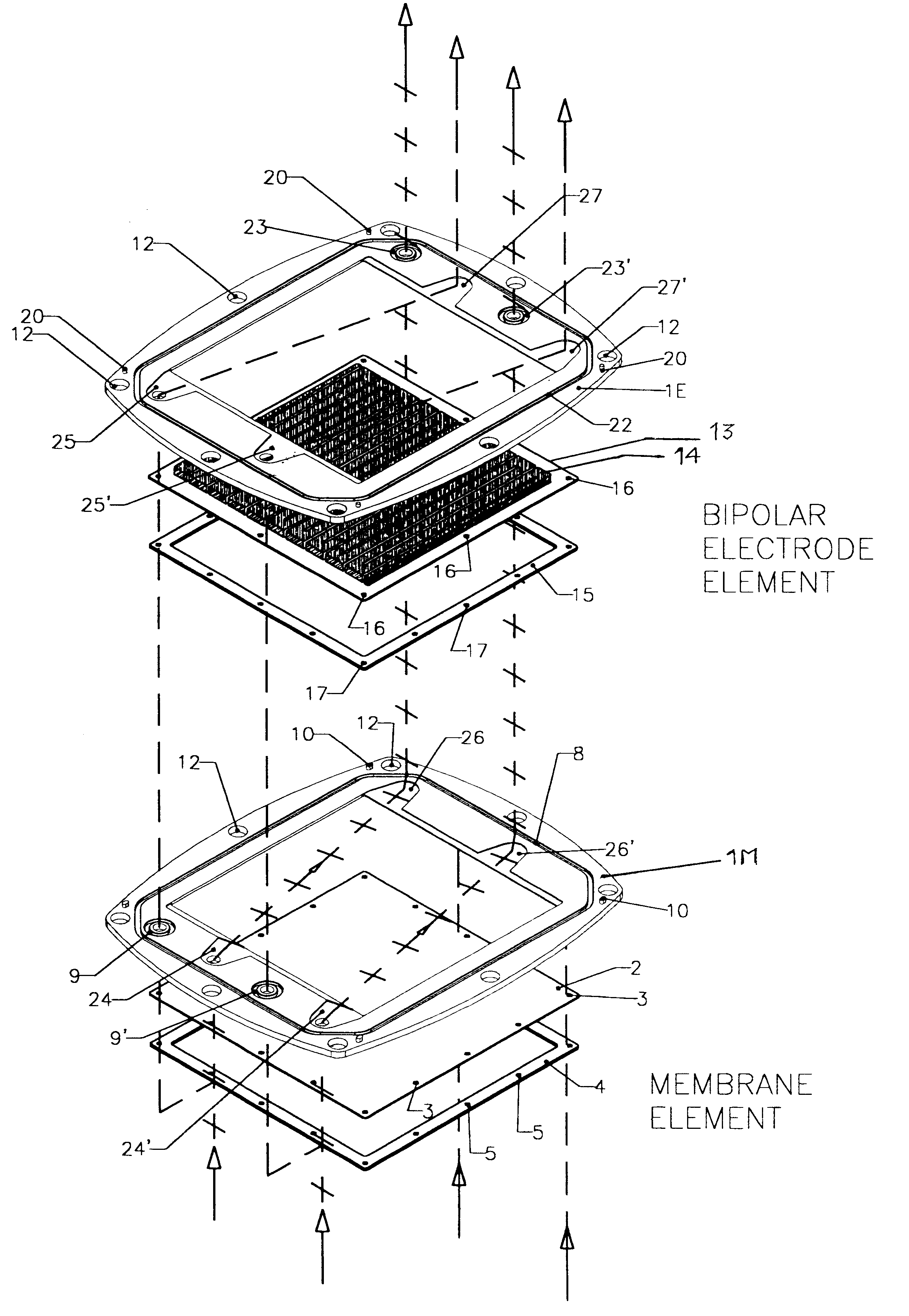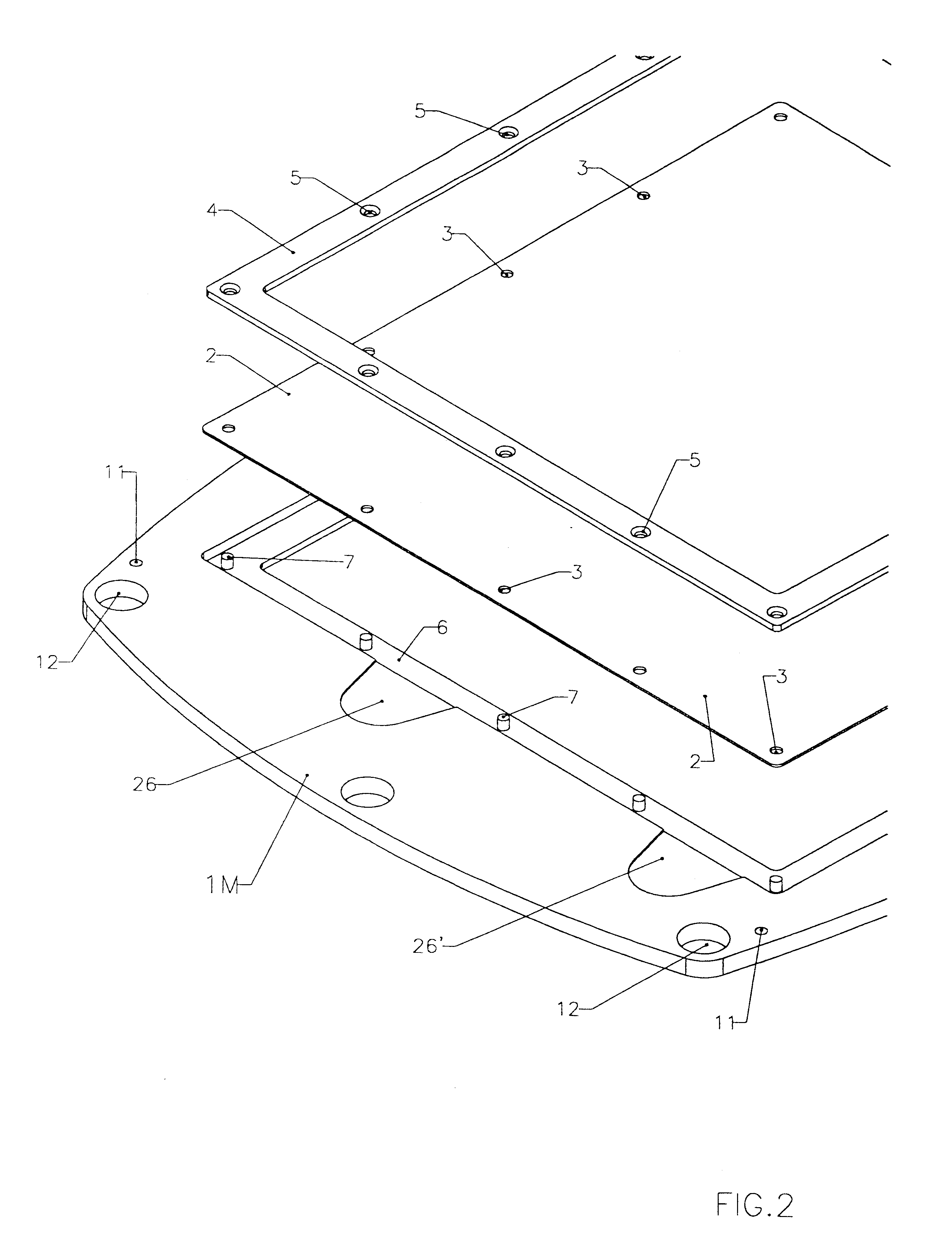Membrane-separated, bipolar multicell electrochemical reactor
a multi-cell, membrane-separated technology, applied in the field of electrochemical reactors, can solve the problems of severe corrosion phenomena of conductive parts, complicated and time-consuming operations, and aggravated problems
- Summary
- Abstract
- Description
- Claims
- Application Information
AI Technical Summary
Benefits of technology
Problems solved by technology
Method used
Image
Examples
Embodiment Construction
FIGS. 1, 2, 3, 4 and 5 illustrate a battery realized according to a preferred embodiment of the present invention.
The exploded view of FIG. 1, representing the two types of the pre-assembled elements, namely a membrane element and a bipolar electrode plate element, provides an explicative overview of the architecture of the invention, according to a preferred embodiment.
The frame portion 1M of membrane element and the frame portion 1E of a bipolar electrode element are under many aspects substantially similar. Both may be of a molded plastic material such as for example polypropylene, different molds being employed for the two types of frames 1E and 1M, for implementing suitably different keying pins and sockets.
According to a most preferred embodiment, the molded plastic frames 1M and 1E define a rectangular inner window, however, the outer perimeter of the frame is not rectangular but has a peculiarly curved shape, determined by the fact that each side of the frame has a convex ou...
PUM
| Property | Measurement | Unit |
|---|---|---|
| pressure | aaaaa | aaaaa |
| current | aaaaa | aaaaa |
| electrically nonconductive | aaaaa | aaaaa |
Abstract
Description
Claims
Application Information
 Login to View More
Login to View More - R&D
- Intellectual Property
- Life Sciences
- Materials
- Tech Scout
- Unparalleled Data Quality
- Higher Quality Content
- 60% Fewer Hallucinations
Browse by: Latest US Patents, China's latest patents, Technical Efficacy Thesaurus, Application Domain, Technology Topic, Popular Technical Reports.
© 2025 PatSnap. All rights reserved.Legal|Privacy policy|Modern Slavery Act Transparency Statement|Sitemap|About US| Contact US: help@patsnap.com



